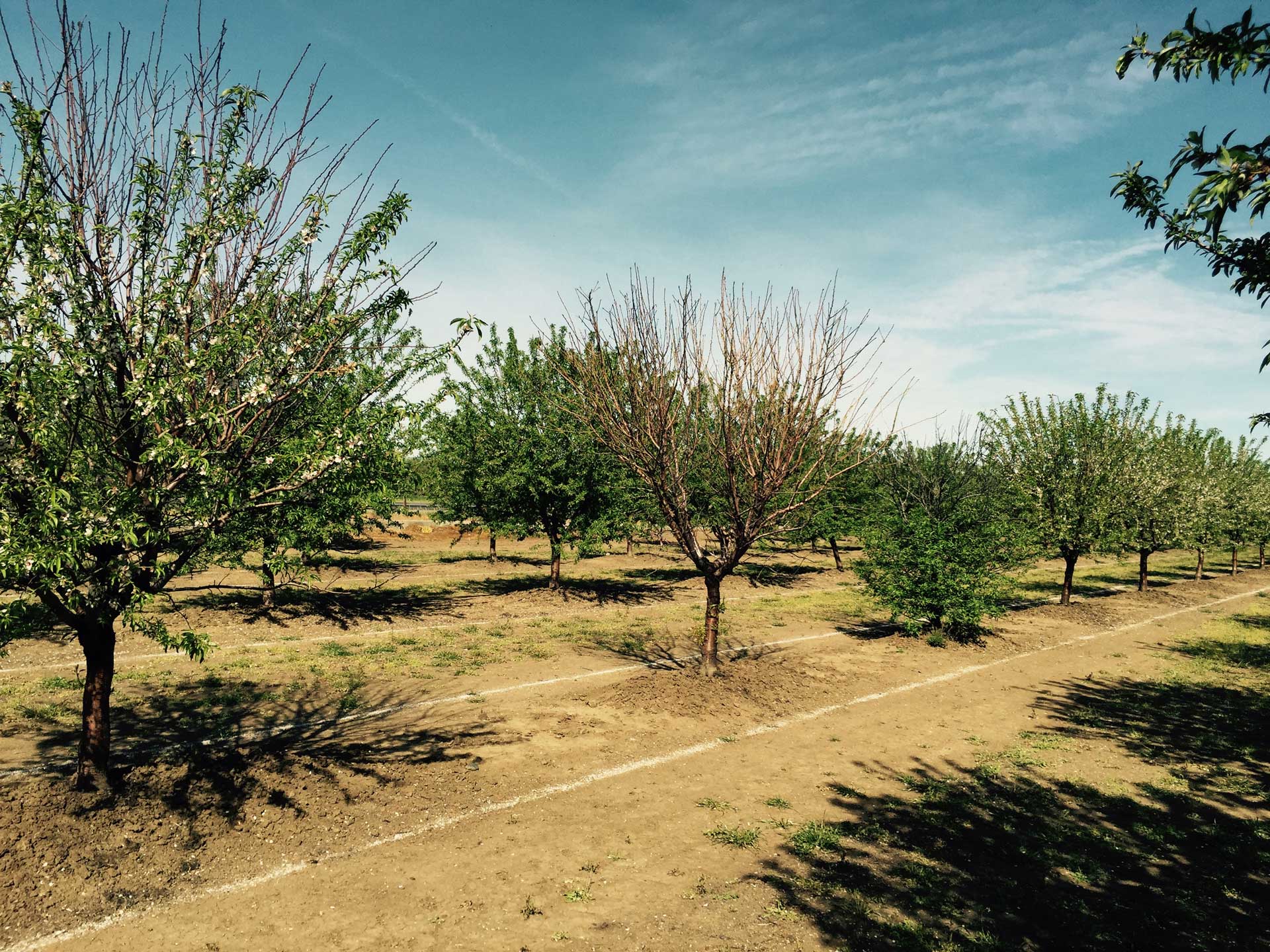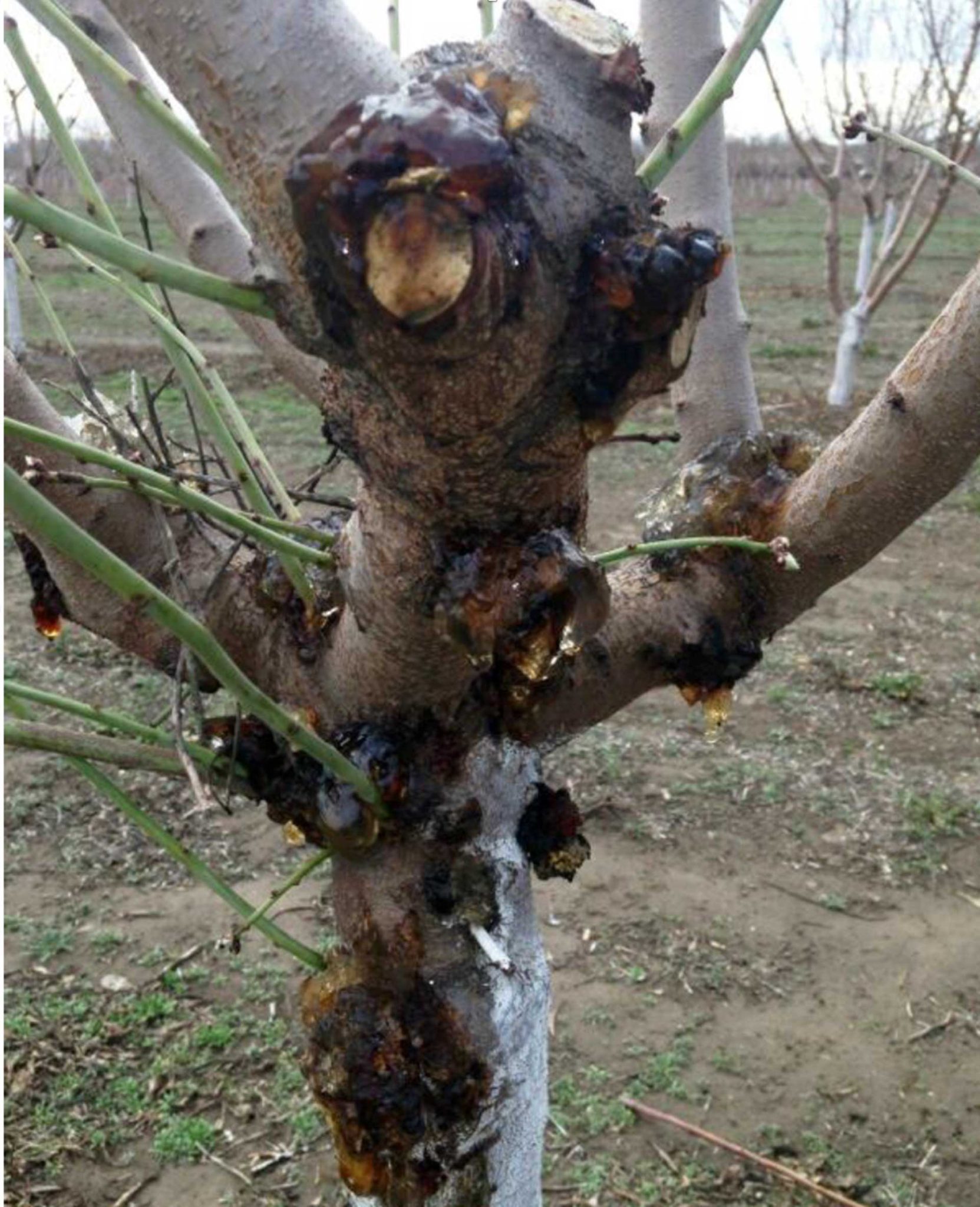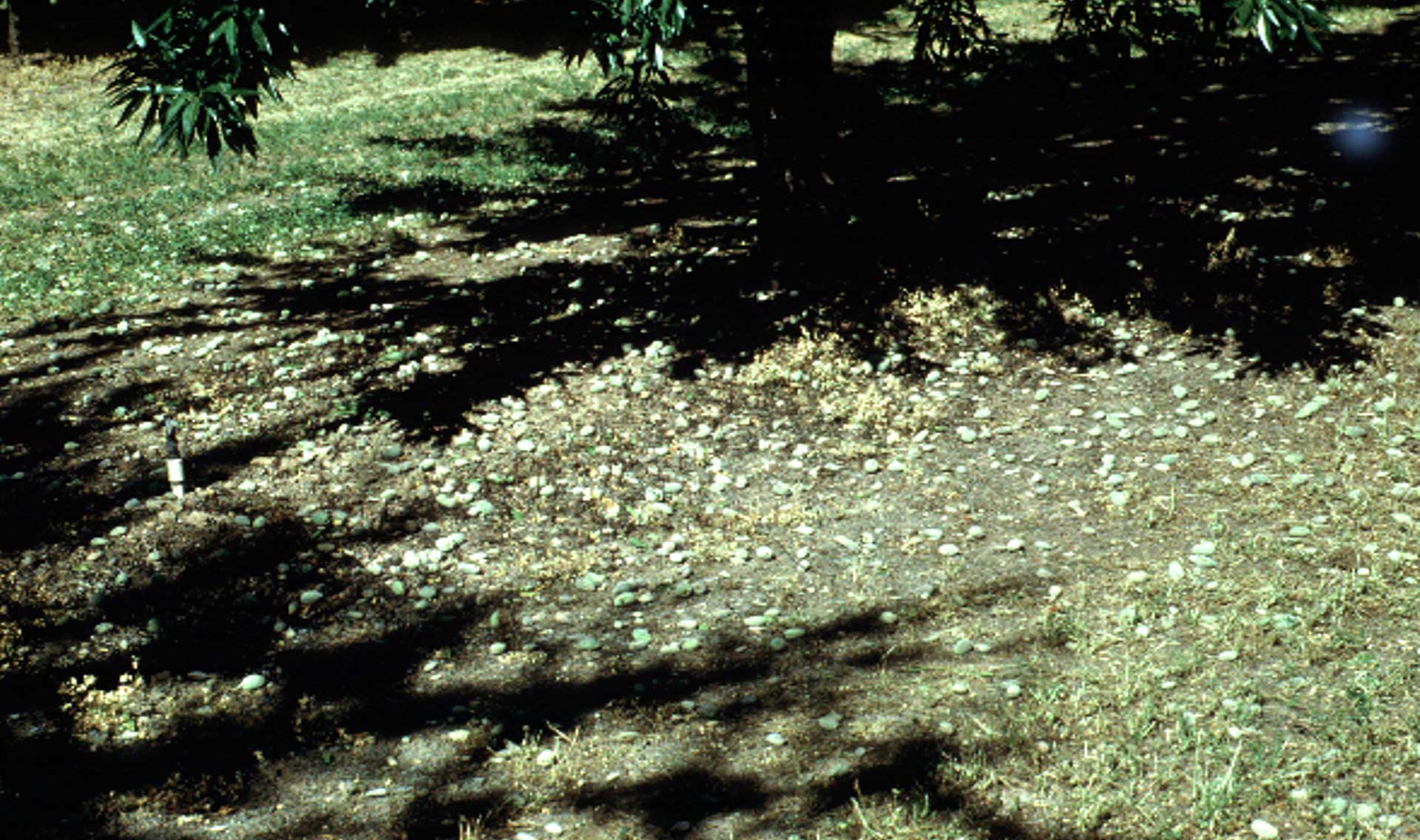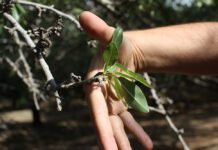When it comes to boron in almonds, planning ahead appears to be the best strategy, both to avoid deficiencies and avoid problems associated with excess boron.
In both cases, the downside can be significant.
Too much boron, which occurs in some areas with poor quality groundwater and is becoming more common as the industry stretches north into some boron-rich areas, can cause ongoing issues with sticktights, dead tissue and sugary wounds at branching points that can provide entry points for fungal diseases.
Too little boron, by far the most significant issue with boron in almonds, can significantly lower yields.
To avoid issues with boron deficiencies, Patrick H. Brown, a professor in the Department of Plant Sciences at UC Davis, said a simple prophylactic spray pre-bloom can be very effective. And, he said, it is relatively inexpensive.
“It is cheap,” he said, “particularly if you are applying it with other fertilizers. It will cost you just a few dollars to add in boron and you will make your money back with just a few pounds of nuts.
“In general, routinely applying boron in a prophylactic way is a good and safe way to prevent a potential deficiency,” he said.
He added that waiting to see if a tree is deficient of boron is not a good option. “The problem with boron is by the time you see a leaf or a shoot deficiency, you’ve probably lost much of your yield and it is too late to do anything about it.”
Also, Brown said, it can be risky to rely on testing to determine if boron is deficient, given that leaf tissue and soil tests can be unreliable. And hull tests, while reliable, won’t always determine if supplemental boron is needed.
“We have had good luck with doing analysis of the hull, and we’ve got some good standards,” he said. “The one challenge is that at the lower ends, if boron concentration in your hull is less than 120 [ppm] or so in the tree, you may or may not have boron deficiency. There are a number of other things that interact to determine whether you are going to get a deficiency.”
Excess Boron
Similarly, in cases where excess boron is present in a system, options for addressing it after the fact are limited.
In cases where growers have access to fresh surface water, they can potentially leach the boron out of soil, said Katherine Jarvis-Shean, UCCE orchard systems advisor for Sacramento, Solano and Yolo counties. But, she said, the best defense against boron toxicity is planting the right rootstock.
“If you have it in the water and the soil, which we have in a lot of Yolo County, your best guard against it is choosing the right rootstock,” Jarvis-Shean said. “It really pays to do your homework ahead of time, and don’t just go with the trees that are easiest to get or that are most available. I would say waiting for another year to be able to get a peach-almond hybrid would be worth it rather than going with a susceptible variety, which is going to be a lifetime of heartache.”
Peach-almond hybrids far outperformed pure peach hybrids in an 11-year trial Jarvis-Shean recently concluded. [ed note: please include this in the online version only: To access a video on the trial, go to youtube.com/watch?v=1We4in85-aM&list=PL-4hcdcwd4bjZeshNvTeoC_TupxZamHKb&index=5.]

Boron’s Main Function
Boron’s main function in almond production, according to Brown, is to help the pollen tube grow to the ovary to produce a nut.
At times, such as under perfect flowering conditions, successfully pollinating every single flower is not beneficial, Brown said. “In that circumstance, a mild boron deficiency that compromises a few flowers probably wouldn’t make any difference because you have so much flower potential. So, missing a little bit of boron is not that big of a deal.
“In the opposite circumstance, say you’ve got moderate flowering and poor pollination conditions: it is windy and cold and the bees aren’t flying and the other cultivars in the field are not flowering in synchrony. Then the tree is going to set fewer flowers and nuts and, in that case, a boron deficiency will make a huge difference,” he said. “In that circumstance, you are already at the margins of having enough fruit, and then you add a boron deficiency on top of that, and you are in real trouble.”

Application Timing
In addition to the pre-bloom application, there are several other times of the year when boron can be foliar applied, Brown said, including postharvest, an application that can provide significant benefits, particularly after a high-yielding year.
“Get it on the leaves or in a fertigation as soon after harvest as possible when the leaves are still green and healthy, and that boron will go back into the bud, ready for next year,” Brown said.
One caveat to the postharvest application is boron can be leached out of the buds prior to the next season if subject to a particularly wet and foggy winter. “So, even though you may have loaded them up in September of the previous year, there is always a chance that you could lose some of that boron, and then a small amount of boron applied pre-bloom would be a good idea,” Brown said.
Brown cautioned growers from applying boron during bloom, noting that it can actually have a detrimental effect on yield.
“You really should not be spraying boron onto an open flower,” Brown said. “When you do, boron can confuse the pollen tubes to the point where they will lose their directionality, and they might not reach the ovary. And, while we don’t have the data exactly, there is potential for boron to have a negative impact on bees.”
Boron also can be beneficially applied to soil at multiple points in a season. “The only time that it absolutely doesn’t work for a soil application is pre-bloom,” Brown said, “because there is nothing going into the tree prior to bloom.”
Soil v. Foliar Application
When soil-applying boron, Brown advised growers to keep in mind that the developing hull can be a strong sink for boron. “So, if you have a very big crop, you’ve got a lot of sugar going up to those fruit, it can actually compete with the buds for adequate boron,” he said. “A poorly timed boron application might end up simply feeding the hulls.
“So, soil applications will certainly get into the tree and certainly enhance the tree,” he said, “but in a very high-yielding year, you may benefit from a pre-bloom foliar application.”
After fruit is mature, soil applications of boron can be effective, as long as a tree is healthy and active, Brown said. Putting any fertilizer on a harvest-stressed tree, whether foliar- or soil-applied, is not going to be very efficient, he added.
The bottom line, Brown said, is boron is a relatively inexpensive yet essential micronutrient, and avoiding a boron deficiency in almonds is not that difficult.
“Boron is essential,” Brown said. “And, quite honestly, given its relative cheapness and its potentially huge effect, I think the approach of just prophylactically making a routine application is the wisest thing to do.”
















